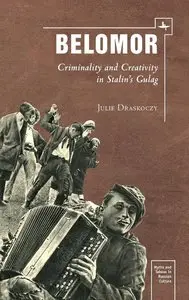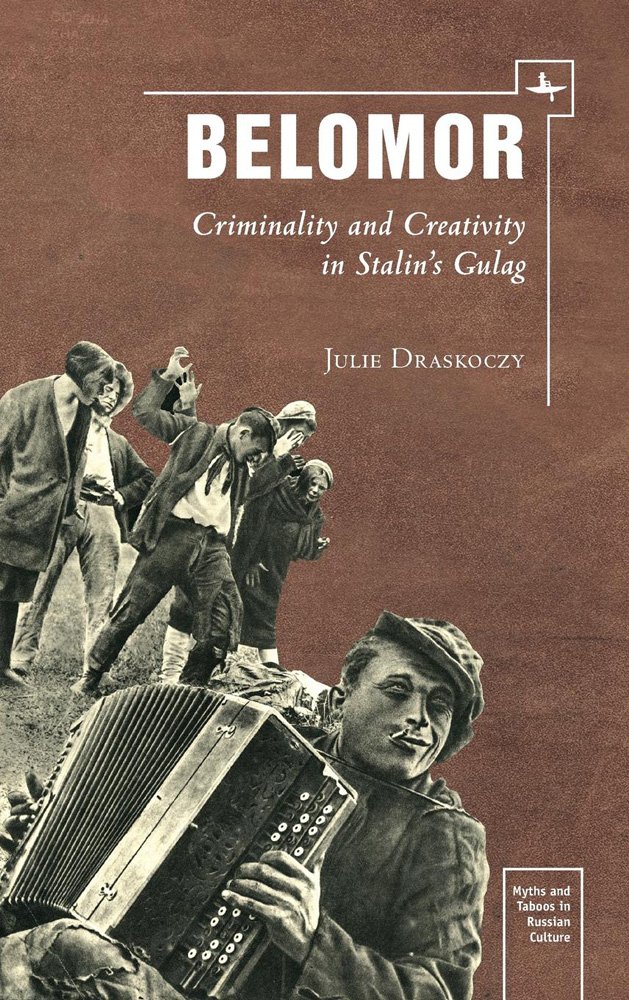Belomor: Criminality and Creativity in Stalin's Gulag by Julie S. Draskoczy
English | 2014 | ISBN: 1618112880 | 252 pages | PDF | 13 MB
English | 2014 | ISBN: 1618112880 | 252 pages | PDF | 13 MB
Containing analyses of everything from prisoner poetry to album covers, Belomor: Criminality and Creativity in Stalin's Gulag moves beyond the simplistic good/evil paradigm that often accompanies Gulag scholarship. While acknowledging the normative power of Stalinism–an ethos so hegemonic it wanted to harness the very mechanisms of inspiration–the volume also recognizes the various loopholes offered by artistic expression. Perhaps the most infamous project of Stalin's first Five-Year Plan, the Belomor construction was riddled by paradox, above all the fact that it created a major waterway that was too shallow for large crafts. Even more significant, and sinister, is that the project won the backing of famous creative luminaries who enthusiastically professed the doctrine of self-fashioning. Belomor complicates our understanding of the Gulag by looking at both prisoner motivation and official response from multiple angles, thereby offering a more expansive vision of the labor camp and its connection to Stalinism.
“Julie Draskoczy’s Belomor: Criminality and Creativity in Stalin’s Gulag is a well-conceived and thoroughly researched study of unknown, yet truly important, aspects of the Belomor camp, a key site of Stalin’s Gulag. This study stands out through its careful archival research into fascinating prisoner writings produced in the camps―autobiographies as well as literary attempts submitted to the camp newspaper Perekovka. The body of unpublished prisoner writings that Draskoczy has studied in Moscow archives are ‘live’ accounts of camp life, yet, as Draskoczy carefully shows, they are highly mediated representations of the writers and their camp experiences, complex texts that can share narrative strategies with both futurist and socialist realist art. Given the many different literary and cultural layers that make up these writings, it takes a discerning and knowledgeable reader to do justice to the complexity of the material. Draskoczy rose to this challenge, and has produced a judicious, insightful, and readable study.” (Cristina Vatulescu, Associate Professor of Comparative Literature, New York University)
. . . [T]he book offers an in-depth study of the vast variety of narratives, voices, and performative acts connected to the Belomor project understood as a venture to transform both nature and prisoners. Most interestingly Draskoczy offers a fresh view on camp experience in the early 1930s, leaving the conventional narrative of political prisoners aside in favor of the perspective of criminals, who most of the time constituted the main group within Gulag society and at whom the concept of perekovka was initially aimed.” (Felicitas Fischer von Weikersthal The Russian Review, October 2014 issue (Vol. 73, No. 4))
“The most outstanding feature of this book is probably the unpublished material it includes and its analysis as presented by the author. This, together with the wide range of cultural objects analysed (art, theatre, poetry, autobiographies, songs, chastushki, tattoos, etc.), testifies to the extremely precious work done by the author, who managed to recover from Russian state archives and from secondary sources a very interesting set of material for her work. . . . [T]here is no doubt about the quality of this research, which the author has carried out with devotion, enthusiasm, and―interestingly enough―creativity. . . . Draskoczy’s book is one of the few monographs devoted to the analysis of creativity within the camp. It shows how insightful, inspirational, surprising, and productive research on the Gulag from within, using the documents written or created by prisoners during the time they spent there, can be.” (Andrea Gullotta (University of Glasgow) Modern Language Review, Volume 110, Part 4, October 2015)
"Julie Draskoczy’s new study. . . is the first to systematically examine a trove of Belomor prisoner narratives held in Russian state archives. By examining such narratives in conversation with better-known art produced by prisoners and nonprisoners, she explores the subjectivities of those who took part in this monumental, and deadly, construction project. As she discovers, there was remarkable diversity in how prisoners responded to camp officials’ frequent encouragement to participate in literary endeavors. The result, Draskoczy argues, is that prisoner narratives can be used to gain a better understanding of the relationship between creativity and criminality in the gulag, as well as the creative and destructive potentials of Stalinism." (Alan Barenberg, Texas Tech University Slavic Review, vol. 74, no. 4 (Winter 2015))



